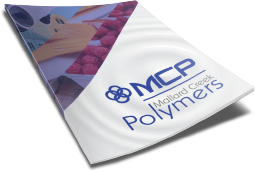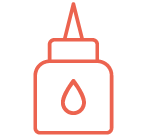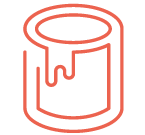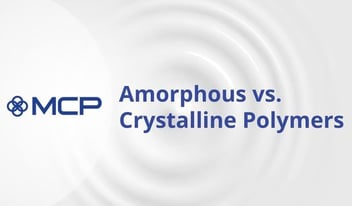
Latex Binders 101: Polymer Design
Chemists who make latexes generally start by understanding how the product will be used. That’s because the end-use application of an emulsion polymer has significant implications for how it’s designed. Knowing the end use helps the chemist develop..
Chemists who make latexes generally start by understanding how the product will be used. That’s because the end-use application of an emulsion polymer has significant implications for how it’s designed. Knowing the end use helps the chemist develop the right recipe, with all of the right ingredients, that results in an emulsion polymer with the right properties.
In Stephen Covey’s well-known book, “The 7 Habits of Highly Effective People,” he observes that productive individuals always begin with the end in mind. Chemists who make latex binders would certainly adhere to this rule. That’s because the end-use application of an emulsion polymer has significant implications for how it’s designed. Knowing the end helps the chemist develop the right recipe, with all of the right ingredients, that results in an emulsion polymer with the right properties.
In this article, we’ll examine this recipe-building process to understand the decisions made by chemists when they design a latex binder from scratch. To do this, it helps to review the fundamentals of emulsion polymerization, the process used to make any synthetic latex. An emulsion polymer requires a number of ingredients, all of which get used during the polymerization process to create a polymer in water:
- Monomers
- Surfactants
- Initiator
- Carboxylic acids and specialty monomers
Monomers are the building blocks of the polymer. Most monomers, however, don’t like being in water, so surfactants are added to create cell-like environments — known as micelles — that form when hydrophobic (water-hating) tails of the surfactant gather toward the center while hydrophilic (water-loving) heads orient themselves outward, in contact with the water. Monomers then migrate from larger monomer droplets into the micelles, where they are shielded from water. Next, initiator chemicals enter micelles and trigger the chain-reaction polymerization that joins one monomer to another, until a long chain is formed. Finally, carboxylic acids and other specialty monomers, which are polymerized into the polymer backbone but exposed at the particle/water interface, help to stabilize the latex.
While the basic polymerization process is the same for any latex, each of the ingredients described above becomes a component that can be chosen by chemists to achieve a specific result.
Choice of Monomers
The first decision confronting chemists is the choice of monomer, which comes down to understanding the environmental conditions of the final product. If the end-use application demands that the latex binder be exposed to sunlight, then the material runs the risk of degradation. This occurs as ultraviolet radiation, absorbed by the polymer, creates destructive free radicals, leading to issues ranging from loss of strength and flexibility to fading color and cracking.
Acrylic latexes made, for example, from methyl methacrylate and butyl acrylate monomers show better UV resistance than those made from styrene and butadiene. As a result, acrylic emulsions are good candidates for binders that must demonstrate excellent exterior durability and UV resistance. Styrene-acrylic emulsion polymers are another good option for exterior applications. In addition to UV performance, styrene-acrylic latexes offer enhanced water resistance, abrasion resistance and hardness, making them a suitable material for applications such as industrial coatings, wood coatings, concrete coatings, primers, filter media binders and traffic paint. Styrene-butadiene emulsion polymers are often the chemistry of choice when direct long-term UV exposure is not an issue. Styrene-butadiene latex binders are ideal for applications requiring excellent water resistance, high filler acceptance, good balance of tensile and elongation, and good adhesion to challenging substrates.
Another important consideration when selecting monomers is glass transition temperature, or Tg — the range of temperatures over which an amorphous polymer becomes less glassy and more rubber-like or vice versa. Chemists can choose monomers in specific combinations of hard and soft to achieve a certain Tg. For example, in a styrene-butadiene copolymer, as the styrene content increases, the Tg also increases. Conversely, if the butadiene content increases, the Tg decreases. By changing the ratio of styrene to butadiene, it’s possible to influence the Tg and produce polymers with different characteristics. The following mechanical properties are directly related to the glass transition temperature:
- Tensile modulus, which measures how much a polymer resists deformation
- Percent elongation, which is a measure of how much the length of a polymer changes when stretched
- Tensile strength, the amount of force a polymer can withstand before breaking
Choice of Surfactants
Anionic surfactants are commonly used in the synthesis of latexes. They are so-named because they have a negative charge on their hydrophilic (water-loving) end. Typical anionic surfactants are fatty acid soaps, sulfates and sulfonates.
Nonionic surfactants, which include poly(ethylene oxides) of various lengths with a variety of hydrophobic groups (predominantly alkyl phenols, primary alcohols, secondary alcohols and alkyl chains), can also be used during polymerization.
In some rare cases, cationic surfactants (those that have a positive charge on their hydrophilic end) are used with emulsion polymers for end-use applications such as asphalt modification.
Remember that surfactants provide the environment — micelles — for polymerization. In this way, they help to provide the necessary stability for the latex particles during the emulsion polymerization process. They also can be used to help control the size of the latex particles. Using less surfactant reduces the number of micelles available to hold growing polymers. As a result, the polymer chains get longer, and the micelles swell to larger sizes.
Choice of Initiators
Highly reactive free radicals are the agents responsible for kickstarting polymerization, and initiators are the source of these radicals. The choice of initiator is usually dependent on two factors: its solubility and its decomposition temperature. Because emulsion polymerization occurs in an aqueous solution, the initiator must be water-soluble. Common initiators are sodium persulfate and ammonium persulfate. These chemicals undergo homolytic fission to produce short-lived, but highly reactive, radicals, which migrate into micelles and react with monomer molecules.
At temperatures above 50°C, thermal reactions drive the homolysis of persulfate salts. If lower temperatures are required, persulfate salts can generate the necessary free radicals via oxidation-reduction reactions, giving chemists some flexibility when working with initiators.
Choice of Carboxylation
As discussed, surfactants are an important part of an emulsion polymer recipe, but they introduce certain challenges. In most polymerization reactions, not all of the surfactant resides on the particle surface, which means some of the material is left in the water. This so-called free surfactant tends to increase in the moisture sensitivity of the latex.
To counter these effects, chemists sometimes add a weak carboxylic acid monomer like acrylic acid, methacryl acid or itaconic acid in the polymerization reaction. These additions are incorporated within the polymer backbone, but they migrate to the surface of the polymer to minimize interfacial surface energy. This enhances the surface charge of the particles, which forces them apart by way of electrostatic repulsion. This stabilizes particle formation and reduces the amount of surfactant needed.
Carboxylation can also encourage crosslinking after curing, which adds to the strength and toughness of the finished material.
Design Experts
The versatility of emulsion polymers and the variables available during polymerization make them very challenging to design. It takes a great deal of expertise to fine-tune a recipe to match a certain application. The chemists at Mallard Creek Polymers collaborate with customers to design polymers for a wide range of industries. We bring a depth of knowledge and a deep bench of polymer specialists to every customer challenge. Contact us today to discuss your need — and how a latex recipe from Mallard Creek Polymers can help you address it.
Be sure to check out the other articles in our Latex 101 series:

 Construction
Construction
 Nonwovens
Nonwovens
 Adhesives
Adhesives
 Textiles
Textiles
 Printing & Packaging
Printing & Packaging
 Paper
Paper
 Paints & Coatings
Paints & Coatings





